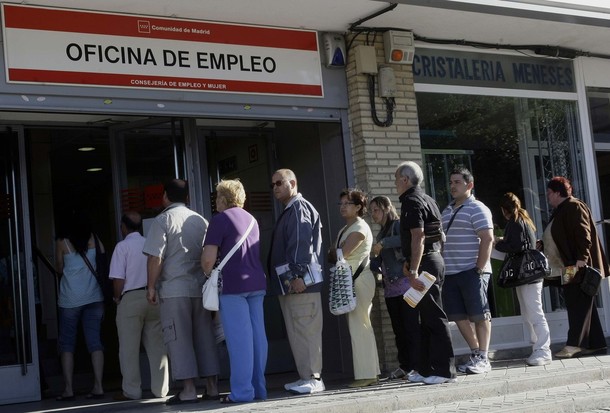
Despite encouraging signs of an uptick in the global economy, unemployment remains an outstanding challenge to both U.S. and EU policy-makers.
While the U.S. is seeing gains in many of the indicators of economic performance – housing starts and sales of new homes have improved markedly while GDP and consumer credit have begun to contract at slower rates – the unemployment rate still stands at 9.7%. In addition, the Federal Reserve predicts that the rate will continue to rise through the beginning of 2010 before decreasing over the rest of the year. Even more troubling, the private research firm IHS Global Insight estimates that a “majority of U.S. states will not return to their pre-recession peak employment levels until 2011 or 2012.”

Indeed, this crisis may be the final nail in the coffin for traditional manufacturing in the Midwest. A recent New York Times article found that “rust belt” states such as Michigan, Ohio and Indiana could “trail the rest of the country for many years to come.” Michigan is presently the state with the highest unemployment rate, at 14.1%, having been severely impacted by the near-insolvency of large manufacturing employers like GM and Chrysler. Governor Jennifer Granholm suggests transforming the state’s economy and workforce by focusing on the production of rechargeable car batteries, solar panels, wind turbines, and other green-technology products. Questions remain whether cities and states that relied heavily on 20th-century manufacturing can restructure and retool their economies for the 21st century.
While the employment outlook seems grim in the United States, it may be worse in Europe. The 9.2% unemployment rate in the Eurozone is the highest since 1999. Although the OECD recently predicted that the worst of the global economic downturn may be over, it warned that the rebound “would be stronger in the United States than in Europe or Japan.”

In Europe, like the United States, the unemployment picture is mixed. Spain has been devastated by the global recession and the collapse of its real estate bubble, with unemployment at 18.1%. Latvia and Lithuania have the second and third highest unemployment rates in the EU, at 17.4% and 16.8% respectively. The Netherlands, on the other hand, is at 3% and Austria at 4.2%. Such unemployment disparity in Europe is one of the many economic issues straining unity among EU member states.
It is true that Europe has more generous unemployment benefits and medical insurance than the United States, which makes the burden of job loss easier for Europeans than Americans. But what is the EU doing about unemployment, particularly among new entrants to the labor market between 20 and 30 years of age? Long-lasting unemployment could have serious repercussions in European national elections and impact EU stability for years to come.
To fight such trends, Europe’s national discretionary recovery measures for 2009 and 2010 are estimated at more than €200 billion. In addition, around 5.5% of EU GDP, or €550 billion, has been allocated for unemployment benefits and other public expenditures on automatic stabilizers. The EU has also relaxed rules in two key social funds, the European Social Fund (ESF) and the Globalization Adjustment Fund (GAF). The GAF, originally designed to help workers who had lost their jobs in large companies due to globalization, is now permitting workers from smaller firms to access the funds. EU rules have also been changed to allow the Union as a whole to take on more of the burden of co-financing unemployment benefits.
While Europe has opened the fiscal floodgates for unemployment insurance, infrastructure projects and worker training, will it be enough? And is Europe prepared for a prolonged crisis? Many predict that rising unemployment in the EU could produce nationalist and populist backlash in the polling booth. While the recent European Parliament elections have seen some gains by nationalist and fringe political parties, with the continent shifting center-right at the expense of leftist parties, there has been little to no political upheaval so far.
The Economist agrees that “there has been no sign of [the] continent-wide unrest that gloomsters once predicted” but reports that anxiety is building among EU officials and business executives over the possibility that a deep, prolonged recession could threaten the EU’s model of flexicurity (labor-market flexibility coupled with a strong social safety net). Flexicurity, according to the Economist, will prove incredibly costly to maintain if unemployment trends continue.
Clearly, soaring unemployment remains a challenge for political leaders on both sides of the Atlantic. In the U.S., it could prove a major hindrance to the policy aspirations of the Obama administration; if Americans remain out of work, health care and climate change reform could be relegated to the backburner. In Europe, if politicians are not proactive on tackling unemployment – in a visible and effective way – there may be less public support for the already strained expansion of EU mechanisms and institutions.
As the global banking sector is cleaned up, capital begins to flow and small businesses gain access to credit, employers will feel comfortable hiring again. Continued fiscal and monetary stimulus should also help to improve the economy. Eventually, such recovery will translate into higher rates of employment. The question remains, however, as to whether governments can weather the storm until then.
Demis Mavrellis is an intern with the Atlantic Council’s Global Business and Economics program. He holds a master’s degree from Columbia University’s School of International and Public Affairs, where he concentrated in international economic policy.
